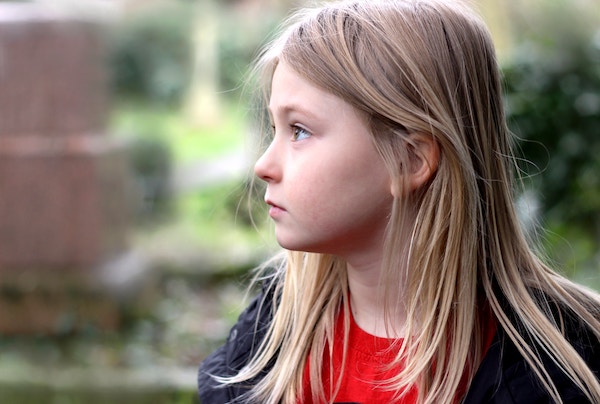Breinholst, S., Esbjørn, B. H., Reinholdt-Dunne, M. L., & Stallard, P. (2012). CBT for the treatment of child anxiety disorders: A review of why parental involvement has not enhanced outcomes. Journal of Anxiety Disorders, 26(3), 416-424
Summary
Previous studies have demonstrated a link between anxiety disorders in youth and parental psychopathology. More specifically, studies have shown that parenting factors such as overcontrol, negativity and poor communication help maintain anxious symptomatology in children. Therefore, it has been proposed that parental involvement in the treatment of children with anxiety disorders is necessary; however, research testing this hypothesis has yielded mixed results.
In this study, the authors conducted a literature review to investigate the role of parental involvement in the treatment of childhood anxiety disorders. The goal of the review was to examine inconsistencies in the literature and determine when parental involvement is beneficial.
Studies were only included in the review if they were randomized controlled trials (RCT) comparing the treatment effect of child-only cognitive behavioral therapy (CBT) and CBT with an additive active parental component. Across the studies reviewed, treatment outcomes differed; some studies showed parental involvement was beneficial while others found no added benefit. This may be due to differences across studies, such as the amount and type of parent involvement. Further, parent involvement was shown to be beneficial for younger children but not older children.
Practical Implications
One important implication of this review is that CBT was effective without parental involvement, indicating that anxious youth can benefit from CBT treatment even if their parent is unable to participate. It may be that parental involvement could be beneficial in specific cases (such as young girls whose parents are also anxious) but specific relationships have yet to be examined. The authors conclude that there is a need for large-scale methodologically-sound studies in order to address the variations in treatment outcome. Psychologists may find it advantageous to include parents when treating anxious youth, but do not need to require parental involvement as youth do seem to benefit from CBT with or without parental involvement.
Waters, A. M., Schilpzand, E., Bell, C., Walker, L. S., & Baber, K. (2013). Functional gastrointestinal symptoms in children with anxiety disorders. Journal of Abnormal Psychology, 41, 151-163.
Summary
While evidence from numerous studies identifies psychosocial factors that contribute to and maintain anxiety disorders in children, there is far less known about the frequency of various physical complaints that may contribute to anxiety in children. Some studies show children with anxiety experience more somatic symptoms compared to children without anxiety; however the aim of the current study was to specifically examine the occurrence of functional gastrointestinal disorders (FGID) in children with clinical anxiety.
The sample included a total of 105 children between 6 and 13 years of age. Fifty-four were clinically anxious youth referred from a treatment center. A control group of 51 children were recruited from a primary school. Parents of the children completed measures of anxiety and FGID. The results suggested that FGID occurs significantly more in youth with anxiety compared to youth without anxiety. Additionally, children with FGID symptoms had higher levels of anxiety symptom severity.
Practical Implications
This study has important implications for treating children with anxiety disorders. The findings suggest that screening for FGID could help improve treatment outcomes by identifying gastrointestinal symptoms that might be interfering with treatment progress. Additionally, the findings suggest that it could be beneficial for primary care physicians and other providers to assess for anxiety if a child presents with gastrological symptoms. Psychologists may wish to develop partnerships with pediatricians in order to provide services to identified children.
Ozsivadjian, A., Knott, F., & Magiati, I. (2012). Parent and child perspectives on the nature of anxiety in children and young people with autism spectrum disorders: a focus group study. Autism, 16(2), 107-121.
Summary
Recent prevalence studies show that about half of children with autism spectrum disorder (ASD) meet the criteria for an anxiety disorder. Although research suggests that the prevalence of anxiety disorders is high in children with ASD, there has been limited research on the way anxiety manifests and is maintained in children with ASD. The authors conducted a qualitative study to further understand anxiety in children with ASD. The authors invited parents of children who have experienced anxiety or worry and also have ASD to participate in a focus group. A total of 17 parents divided into four groups took part in a two-hour session that was facilitated by the authors. The facilitators provided topic questions to the parents related to signs and symptoms of anxiety in their children. Following the focus groups, the content was analyzed using thematic analysis.
The results from the topics discussed in the focus groups provided several key themes related to anxiety in children with ASD. Anxiety triggers were discussed frequently, and typically were related to change in routine or social or language related triggers. Further, specific fears and phobias, such as fear of spiders or injections, was a common theme. Sensory triggers such as loud noises and too many demands or expectations were discussed as anxiety triggers.
The presentation of anxiety was also discussed as a main topic in the focus groups. Overall, parents indicated that common behavioral indicators included avoidance/withdrawal, arousal, sensory behavior (such as increased nail biting), repetitive behaviors, somatic problems and challenging behavior (such as meltdowns).
Parents were also asked about cognitive indicators of anxiety. Parents frequently stated that their child has difficulty sharing their thoughts, or that their child has cognitive distortions related to various situations. For example, one parent stated that their child thinks everyone is talking negatively about him in a social situation. The negative impact of anxiety was discussed frequently, with many parents indicating that their child’s high level of dependence on them was very challenging.
Practical Implications
The focus groups held with parents of children that have ASD and anxiety yielded clinically useful information related to the manifestation and maintenance of anxiety. The authors propose that it may be inappropriate to use standardized measures of anxiety for children with ASD because it appears that anxiety may manifest differently in children with ASD than in typically developing children.
It will be important to develop measures that psychologists can use to measure ASD-specific aspects of anxiety. In the interim, clinicians may want to augment existing measures for use with their ASD clients.
Kerns, C. M., Read, K. L., Klugman, J., & Kendall, P. C. (2013). Cognitive behavioral therapy for youth with social anxiety: Differential short and long-term treatment outcomes. Journal of anxiety disorders, 27(2), 210-215.
Summary
Social anxiety is a common anxiety disorder affecting youth and causing significant distress and impairment. Children with social anxiety are more likely to have difficulty with friendships, family life and school. Cognitive behavioral therapy (CBT) is an effective treatment for youth with social anxiety. The aim of the current study was to examine if youth with social phobia had poorer treatment outcomes compared to youth with generalized anxiety (GAD) and separation anxiety disorder (SAD) at post-treatment, one-year and 7.4 year follow-up assessments.
The study included 91 children with anxiety disorders, of which 39 were diagnosed with social phobia. Youth were randomized to either a CBT treatment or waitlist treatment condition. The results showed that youth with social phobia, GAD and SAD had similar rates of anxiety reduction from pre-to-post treatment and at the one-year follow-up. However, youth with social phobia had less favorable outcomes at the 7.4-year follow-up assessment.
Practical Implications
Given that outcomes for all youth were similar at one-year post follow-up, but youth with social phobia had less favorable outcomes at the 7.4 year follow-up, psychologists may want to consider whether youth with social phobia might need some enhanced treatment or follow-up treatment sessions to maintain treatment gains in the long-term.
Jarrett, M. A., & Ollendick, T. H. (2012). Treatment of comorbid attention-deficit/hyperactivity disorder and anxiety in children: A multiple baseline design analysis. Journal of consulting and clinical psychology, 80(2), 239-244.
Summary
Research shows that attention-deficit/hyperactivity disorder (ADHD) and anxiety are commonly comorbid in youth. Although ADHD and anxiety are often comorbid, there is limited information on treatment response for these youth.
The present study developed and evaluated an integrated treatment protocol for children with anxiety and ADHD. The integrated treatment involved 10 weekly sessions (typically 50 minutes with parents, 30 minutes with the child and 10 minutes with both). The study included eight children between the ages of 8 and 12 who had anxiety and ADHD.
The results showed an overall improvement in ADHD and anxiety symptoms; however only anxiety symptoms were in the subclinical range at post-treatment. At a six-month follow-up session, both anxiety and ADHD symptoms were in the subclinical range.
Practical Implications
Although preliminary, this study shows promising results for the effectiveness of an integrated treatment protocol for the treatment of youth with anxiety and ADHD. While additional studies are needed to identify which children might benefit most from the integrated treatment protocol, psychologists may want to consider simultaneously addressing both anxiety and ADHD symptoms when treating youth with such co-morbidity by integrating specific components from ADHD and anxiety treatment protocols. More specifically, components such as parent management training, limiting the length of the session with the child to 30 minutes, and rewards for on-task behavior may be beneficial.


Recent Comments